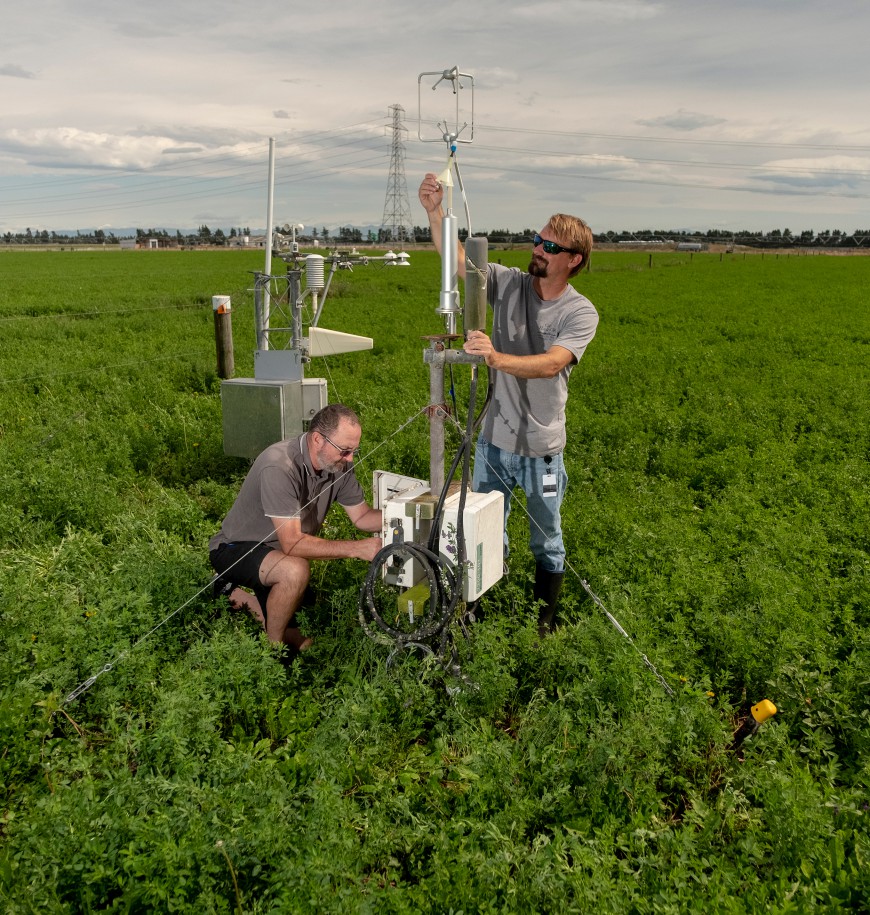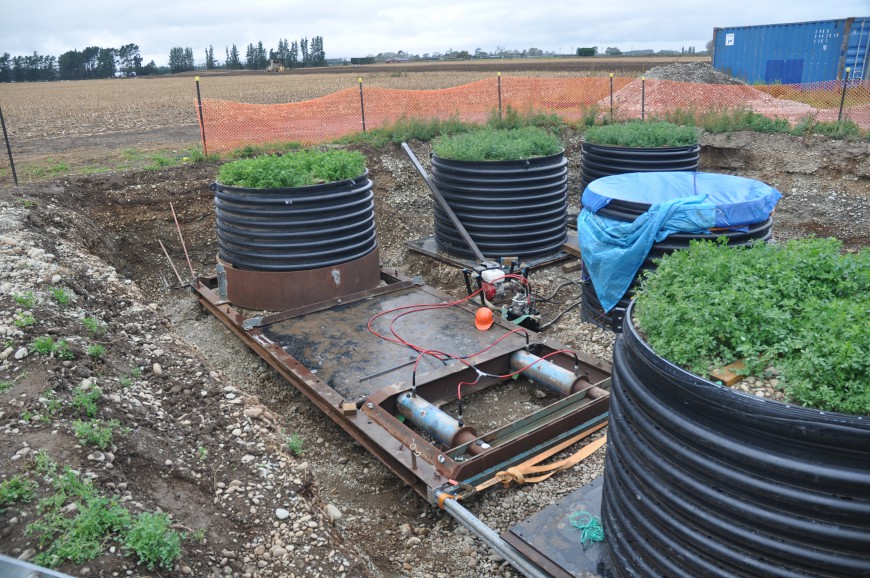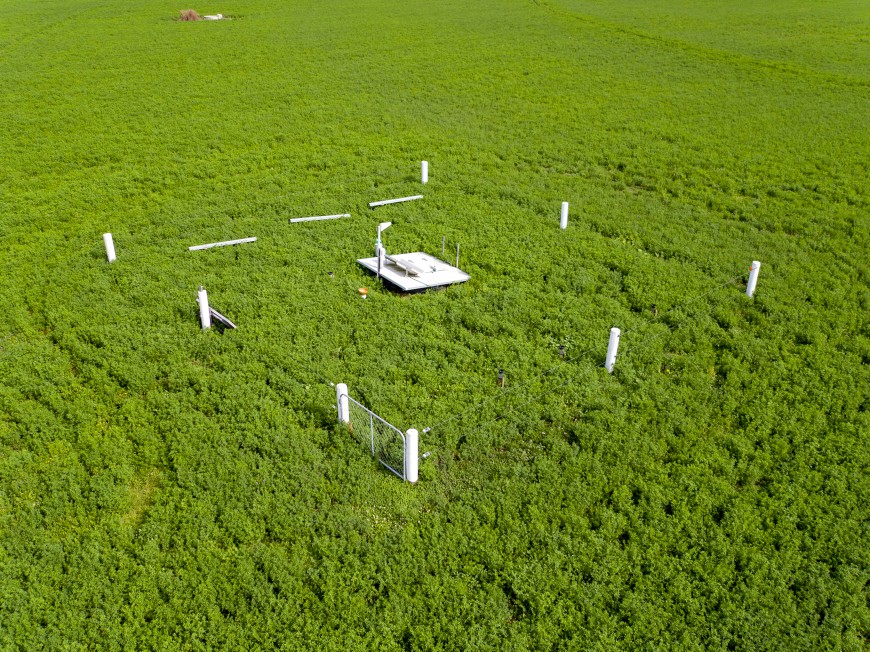Annual net inputs and losses of carbon and nitrogen for irrigated and non-irrigated lucerne
In this section
-
Reducing nitrogen losses from farms
- Measuring and modelling paddock water inputs and losses on stony soils
- Annual net inputs and losses of carbon and nitrogen for irrigated and non-irrigated lucerne
- Carbon inputs to reduce nitrogen losses
- Sward species and cattle diet effects on nitrogen losses
- Contrasting microbial activities in topsoil and subsoil
- Identifying soils with low nitrogen losses
- Mauriora Systems Framework: A guide and process for decision-making
- Recommendations for farmers
Key findings
- To examine how irrigation affects carbon and nitrogen losses on stony soils, we measured carbon and nitrogen inputs and losses for three years for irrigated and non-irrigated lucerne
- Annual net losses of carbon were higher for irrigated lucerne compared to non-irrigated (2-3 tonnes C/ha/year under irrigation and 0-2 tonnes C/ha/year under no irrigation)
- Similarly, there were higher nitrogen losses through leaching in irrigated lucerne (39-102 kg N/ha/year under irrigation and 7-30 kg N/ha/year under no irrigation).Variability between years in seasonal weather patterns and the intensity and frequency of grazing have major impacts on soil carbon stocks and nitrogen leaching
- To reduce soil carbon and nitrogen losses, farmers should irrigate to maintain the soil water content below field capacity but above the crop’s water-stress limit

Continuous measurements of water vapour and carbon dioxide exchange at paddock scale above lucerne to determine seasonal and annual ecosystem net water and carbon balances (Bradley White)
Dairy farming practices can speed up or slow down the losses of carbon and nitrogen from the soil, and we need to determine which farming practices can be changed to minimise these losses. This section of the Programme examines how the irrigation (water and dairy effluent) of lucerne affects carbon and nitrogen losses on drained, stony soils.
To do this, Johannes Laubach and collaborators from Manaaki Whenua – Landcare Research continually measured carbon and nitrogen inputs and losses for four years at paddock scale to determine annual net changes of carbon and nitrogen of lucerne with and without irrigation water and dairy effluent. We used lucerne because it is a deep-rooted forage crop which grows quickly and well in stony soils. The inputs and losses were measured through gaseous exchange with the atmosphere, soil drainage, and management events such as harvesting and grazing. Additionally, we measured water inputs, soil water content, and drainage. All these measurements enabled us to examine the seasonality of drainage events and how management affects losses.

Installing large lysimeters containing undisturbed soil monoliths established with lucerne for direct measurements of carbon and nitrogen leaching. The lysimeters are 2 m in diameter and 1.5 m deep. Note the high stone content of the soil (John Payne)
We found that annual net losses of carbon were higher for irrigated lucerne compared to non-irrigated. For non-irrigated lucerne, net soil carbon losses between 0 and 2 tonnes C/ha/year for first 2-3 years when the management was mostly cut-and-carry. For irrigated lucerne, losses of 2-3 tonnes C/ha/year have been recorded consistently. Largest carbon losses occur in later part of season, when photosynthesis declines faster than respiration.
Similarly, Scott Graham and collaborators from Manaaki Whenua – Landcare Research found that irrigation increased the rate of nitrogen leaching, with losses of 7-30 kg N/ha/year for the non-irrigated site and 39-102 kg N/ha/year for the irrigated site. Larger losses occurred with grazing relative to cut-and-carry management. Summer leaching events resulted in the highest losses.

The completed lysimeter facility providing continuous measurements of carbon nitrogen and phosphorus leaching under irrigated lucerne (Bradley White)
These results indicate that by changing irrigation management practices, farmers can reduce the losses of soil carbon and reduce the rates of nitrogen leaching. Our field data have given us some clues as to some potentially useful management scenarios to investigate. For instance, one of our studies showed that irrigated paddocks lose more carbon than non-irrigated paddocks, and this is probably related to more microbial activity at the end of the summer, when soils are typically dry. Deficit irrigation practices which lead to drier soil conditions during vulnerable time periods may help to minimise soil carbon loss. Another preliminary observation from our experimental site is that grazing instead of cut and carry harvest increases the carbon in the soil. However, grazing animal inputs from urine and dung contribute to increased nitrogen leaching. These patterns are also difficult to interpret against a background of environmental variability and site history. Future work using models will allow scenario analysis to predict the impacts of grazing and cut-and-carry management on soil carbon and nitrogen losses.
For more details go to
Laubach J, Hunt JE, Graham SL, Buxton RP, Rogers GND, Mudge PL, Carrick S, Whitehead D. 2019. Irrigation increases forage production of newly established lucerne but enhances net ecosystem carbon losses. Science of the Total Environment 689:921-936. https://doi.org/10.1016/j.scitotenv.2019.06.407